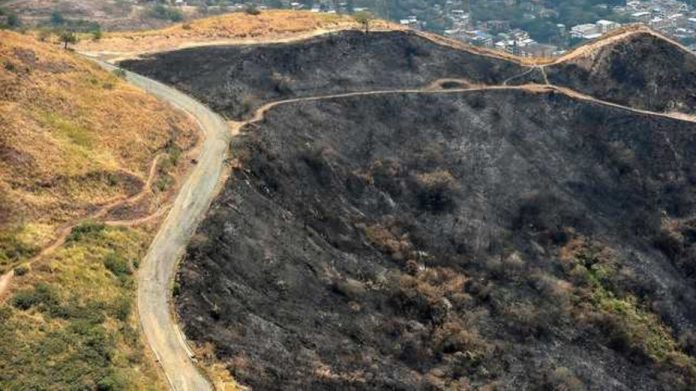Climate finance is needed to achieve mitigation goals as large-scale investments are required to significantly reduce emissions. It is equally crucial for adaptation, as significant financial resources are needed to adapt to the adverse impacts of change.
The impacts of climate change are already upon us and are projected to worsen in the medium and long-term. For developing countries, aggregate emissions have now exceeded emissions in developed countries. This is a big threat to the progress of SDGs and will trigger significant losses to countries’ GDP.
As a result of these effects, politicians, policymakers and business leaders are recognising the urgency and need for climate action. The fiscal policy reforms are one way to enhance broader development, which is distinguishable from changes needed to mitigate and adapt to climate change.
As per the principle of “common but differentiated responsibilities and respective capabilities” on climate change, developed countries are expected to provide financial resources to assist developing ones in implementing actions toward mitigation and adaptation objectives.
However, the latter will need to have fiscal policies and other initiatives to mitigate and adapt to climate change beyond the funding from developed countries,
The introduction of environmental taxes and environmental tax reforms (ETR) is a package of policies that combine environmental taxes with expenditure policies alongside supplementary policies.
ETR seeks to improve alignment of taxes and tax-like instruments with environmental damages, coupled with socially productive ways of using revenues raised from the fees.
ETRs are designed to achieve numerous environmental and non-environmental benefits with direct and indirect effects on emissions and impacts.
The revenues raised from increased environmental taxes may be used in pursuit of climate-oriented developmental objectives. Revenues may also be used to reduce pre-existing taxes potentially increasing outputs and employment.
Risk-pooling mechanisms are instruments and tools that are applied at different levels, macro and micro. The macro levels include regional and national. Levels depend on where the reported action to address climate risk is taken.
They serve to set up an enabling policy and regulatory environment to raise and channel financial resources directly. Many of these instruments will contribute to making development projects to be climate-resilient.
Read also: Biodiesel offers Kenya a viable clean transport route
Effecting and scaling of public-private partnerships will lead to a long-term contract between them for providing a public asset/service. The private party bears significant risk and responsibility.
The partnership will serve based on the green infrastructure projects where the PPP holds potential for enhancing efficiency and embedding of climate change into large infrastructure investments, mobilising resources to support infrastructure projects of smaller scale and supporting innovation.
Support of capacity building and technology transfer mechanisms will enhance adaptive capacity to strengthen resilience and reduce vulnerability to climate change in line with the best available technologies.
A great example is climate-smart agriculture which forms an approach that helps guide actions to transform agri-food systems towards green and climate-resilient practices. It’s a farming practice transferred to developing countries to help increase outputs.
Crops cultivated and livestock reared have been made to adapt to prevailing climatic conditions of a particular region. This enhances aspects of sustainability and productivity while raising revenues that can be used to improve livelihoods.
Carbon market and carbon trading systems are powerful instruments for effectively managing GHGs emissions in an economically efficient manner for society as a whole.
In addition, carbon pricing, which consists of setting a price on GHGs, will help curb emissions and foster a switch to low carbon practices.
While climate finance provides the means for implementation of projects, while climate finance provides the means for implementing projects, carbon pricing provides incentives to mobilise the most effective mitigation costs.
When it comes to climate funding mechanisms, a global platform consisting of designated and operating entities that design policies, programme priorities and eligibility criteria for funding adaptation and mitigation projects and projects need to be strengthened.
Currently, entities such as the global environment facility and green climate fund are significant players in funding of climate change. Specific funds for developing counties will be a plus toward the journey of more resilient pathways to development for developing counties.
Addressing climate mitigation and adaptation globally requires the participation of a range of actors and considerable financial resources.
This can only be provided through a dedicated climate finance mechanism involving a wide range of actors from governments, civil society, development partners and private sectors including financial institutions and financial intermediaries.
They will need to embrace opportunities presented by climate finance to help countries maintain the progress of sustainable development goals.



